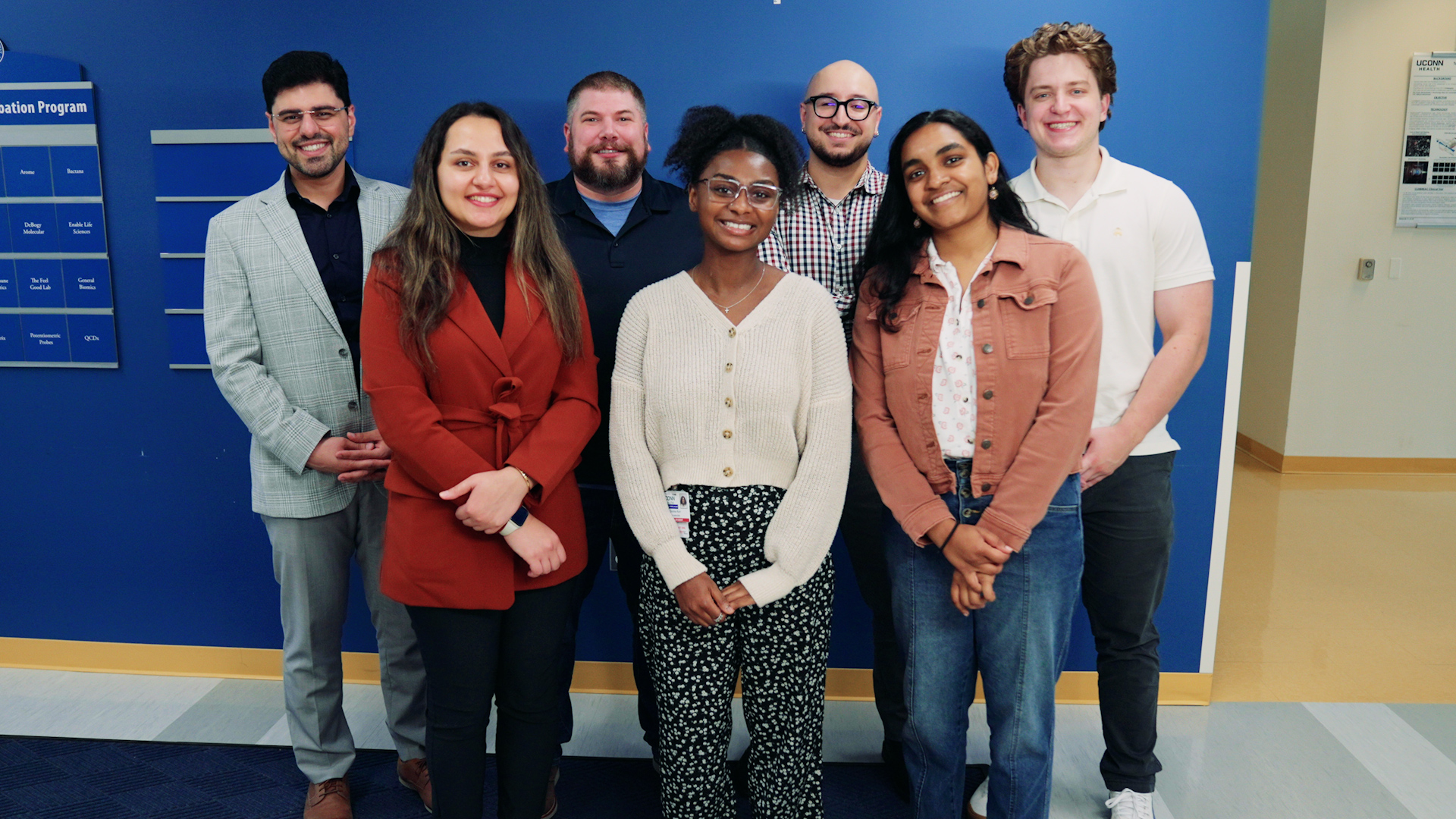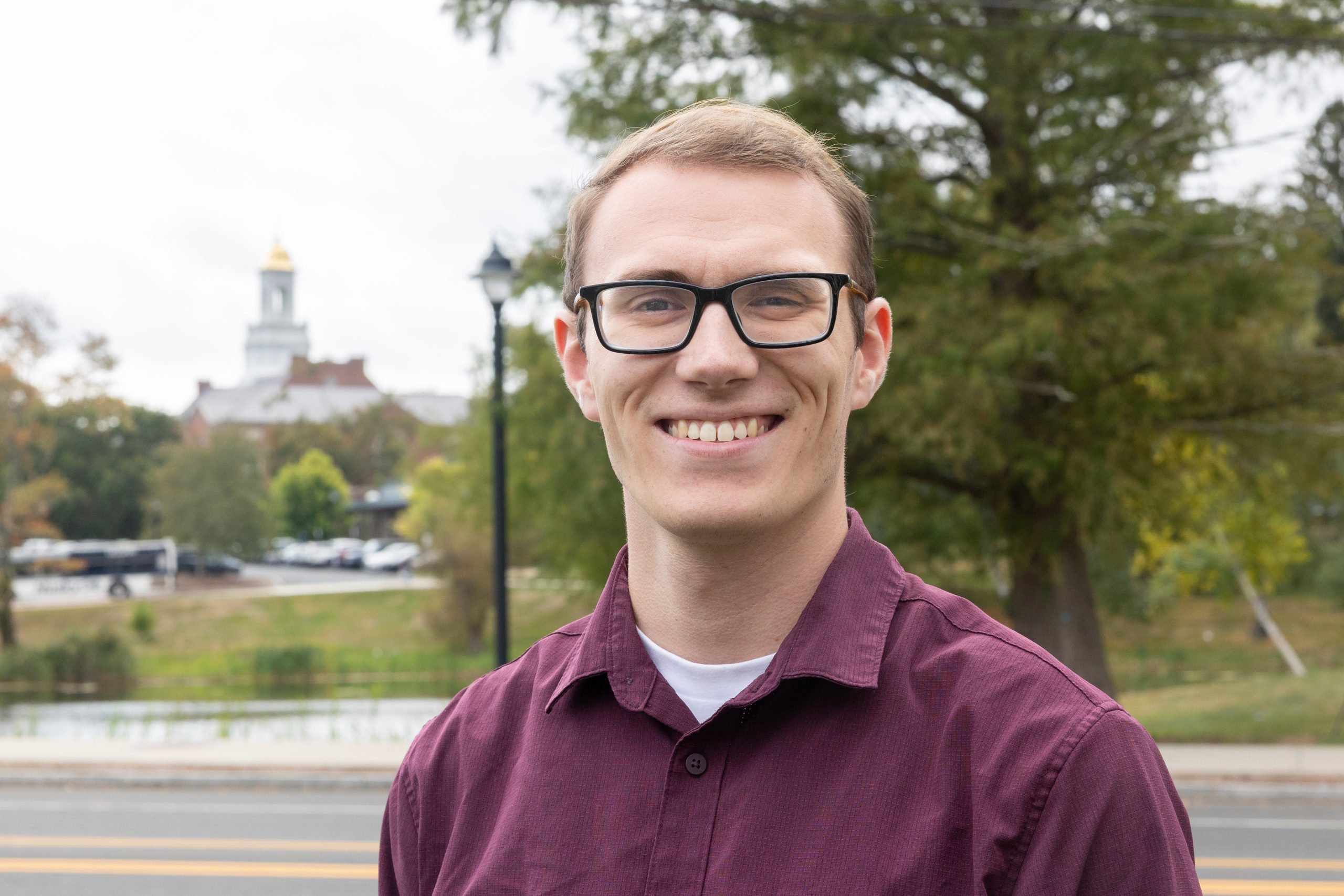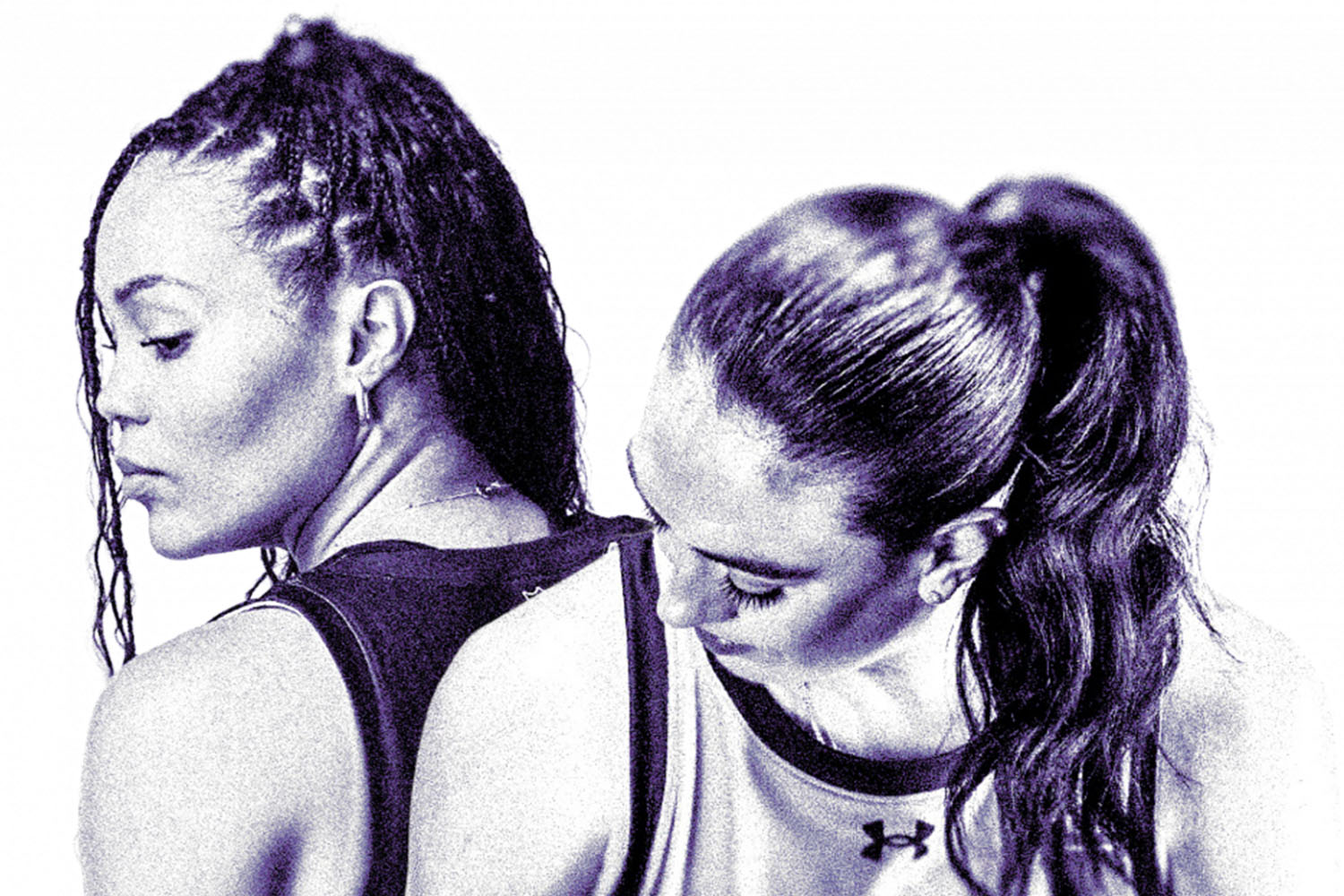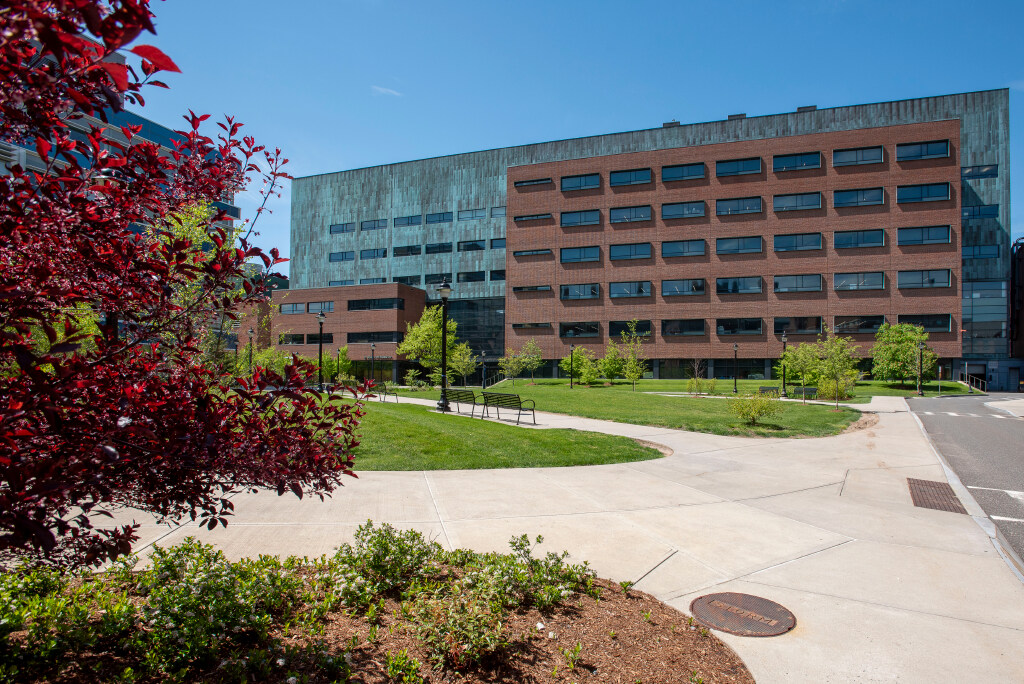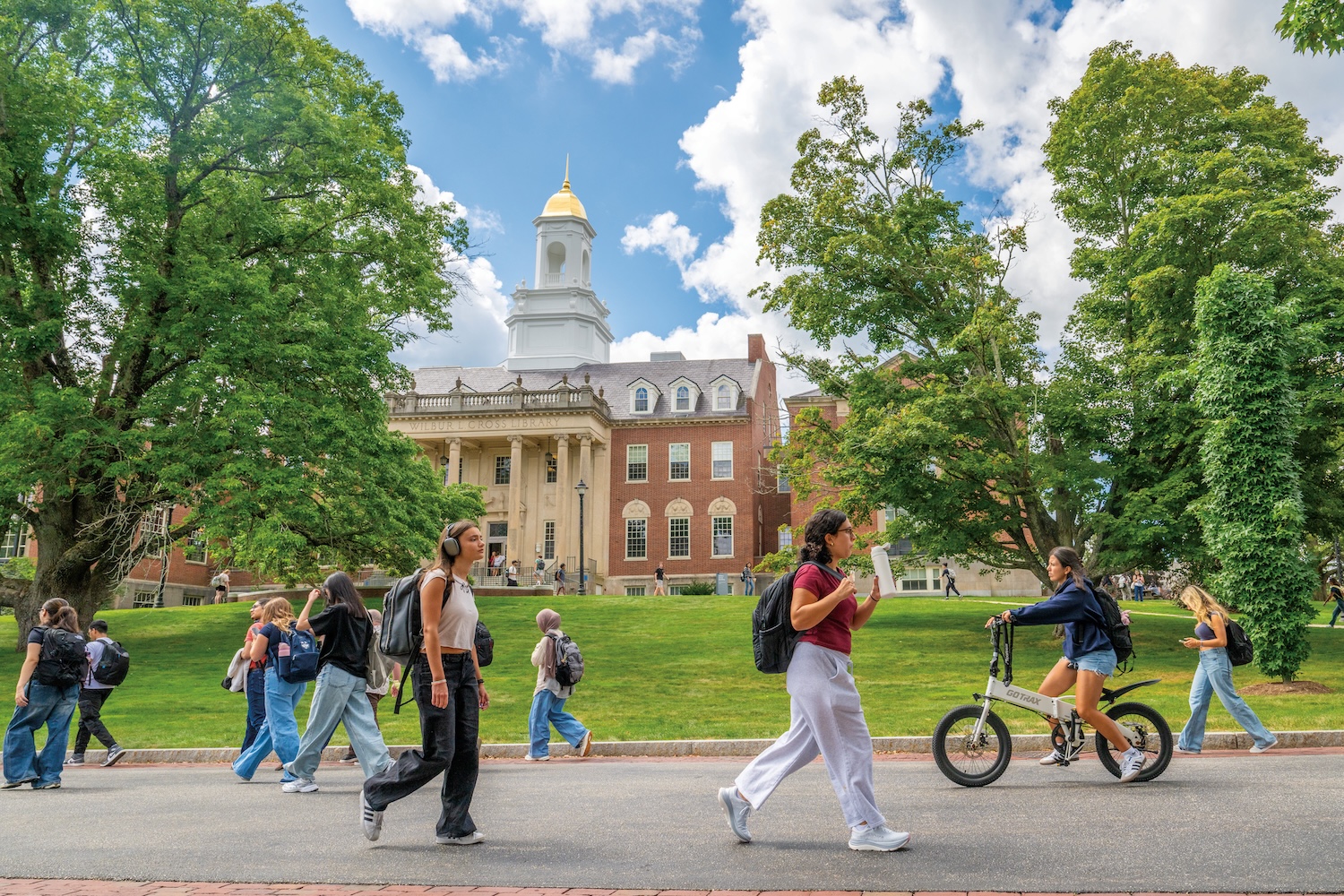Meet the Researcher: Kinesiology Assistant Professor-in-Residence Jim Smith
Despite a long, accomplished career in academia, Jim Smith still can’t quite believe he’s an Assistant Professor-in-Residence of Kinesiology at UConn’s College of Agriculture, Health and Natural Resources (CAHNR).
“I never imagined myself in academia,” says Smith. “I always struggled in school. It did not come easily to me. Things worked out well, though. It’s been a beautiful trip.”
An impressive one, too, shaped by a blend of personal experience and work as a physical therapist and practical researcher that culminated in July with being named a 2024 Catherine Worthingham Fellow by the American Physical Therapy Association (APTA). The designation is the highest honor among APTA’s membership categories and recognizes the recipient’s professional excellence and unwavering efforts to advance the physical therapy profession.
Smith specializes in acute care physical therapy and for the last decade has investigated critical illness and post-intensive care syndrome, a condition characterized by health problems that develop in the ICU that may persist after the patient returns home. When COVID hit, Smith became a sought-after expert, sharing his findings in the first two years of the pandemic in 24 regional and international presentations to healthcare providers grappling with an onslaught of critically ill patients in their ICUs.
In the years since, his research has expanded to include patients experiencing persistent muscle weakness, difficulty breathing, and other problems associated with what has come to be known as Long COVID. Through his research, Smith observed that patients benefit from starting rehabilitation while still in the ICU. When PT is introduced in the ICU, the patient’s time on a ventilator, in the ICU, and the hospital are reduced.
Smith joined the UConn faculty in 2023 after retiring as a professor at Utica University, where he taught physical therapy for 18 years, and after taking time off to pursue his passion for white water canoeing.
He grew up in Bozrah and discovered his affinity for physical therapy at an Easter Seals camp in Hebron. Teen campers took note of his talent and encouraged him to go into the field. A remark from his dad, who had polio as a child and worked at the camp in the 1950s, provided the decisive nudge. When asked for advice about physical therapy, his dad, who walked with crutches as a result of his polio, told Smith, “I can tell you what it was like in the 1950s, but I can’t help you understand the profession now.”
In the years since, Smith’s career has been an endless quest to improve the practice of physical therapy in acute care settings and chart its future for practitioners and students entering the profession. The list of studies and systematic reviews of literature he has led or to which he has contributed is long.
Notable papers include Home and Community-based Physical Therapist Management of Adults with Post-Intensive Care Syndrome (2020) and Physical Impairments Associated with Post-Intensive Care Syndrome: Systematic Review Based on the World Health Organization’s International Classification of Functioning Disability and Health Framework (2018), both published in Physical Therapy & Rehabilitation. Systematic reviews – a structured, qualitative process used to review scientific literature, draw evidence-based conclusions, and make recommendations – are relied on by healthcare providers to inform treatment and management strategies for patients.
Outside of clinical settings, Smith service to his profession is similarly robust. He currently serves as the Academy of Acute Care Physical Therapy’s Chief Delegate to the APTA House of Delegates, and as co-chair of its Clinical Practice Guideline Committee. He previously practiced physical therapy at Hartford Hospital and, after leaving there, started the physical therapist assistant program at Naugatuck Valley Community College and served as its founding director.
Joining the faculty at UConn, which offers a doctoral-level program in physical therapy, is an exciting new chapter in the odyssey that is his career, Smith says. In addition to his research, he teaches six courses independently or with others, “so that students entering the profession are prepared for practice now and can anticipate what the practice of physical therapy needs to be in five years and prepare for that.” At CAHNR, the Kinesiology Department centers on students and a shared vision to bring students into physical therapy and related professions, such as athletic training.
“It’s a joy to join that team and a thrill to be part of UConn,” Smith says.
Latest UConn Today
- UConn Cancer Care Startup Goes Global (and Beyond)Encapsulate, a MedTech company founded by UConn alumni, closes seed round and aims ever higher
- What Happens When Local Hospitals Stop Delivering Babies? UConn Anthropology Student is Hoping to Find Out'The goal of this project is, within the medical anthropology context, to really look at people’s lived experiences'
- UConn Magazine: UnrivaledForgive Napheesa Collier and Breanna Stewart for not gushing over the success of Unrivaled, the three on three women’s basketball league they cofounded
- New Interactive Map of Connecticut Nonprofits Rolled Out to Help With Decision-Making'Nonprofits have saved the State of Connecticut billions, not millions, of dollars. They took on some of the toughest public services'
- UConn Pharmacy Professor Running for President-Elect of the American Society of Consultant PharmacistsChristina Polomoff, Pharm.D. (‘14), associate clinical professor, is running for president-elect of the American Society of Consultant Pharmacists (ASCP). Supported by her UConn and pharmacy communities, she hopes to continue building ASCP as an innovative, inclusive home where every member thrives.
- UConn, Bridgeport Officials Announce ‘Promise’ Financial Aid ProgramTalented students from the Park City will receive financial aid for attending any UConn campus








